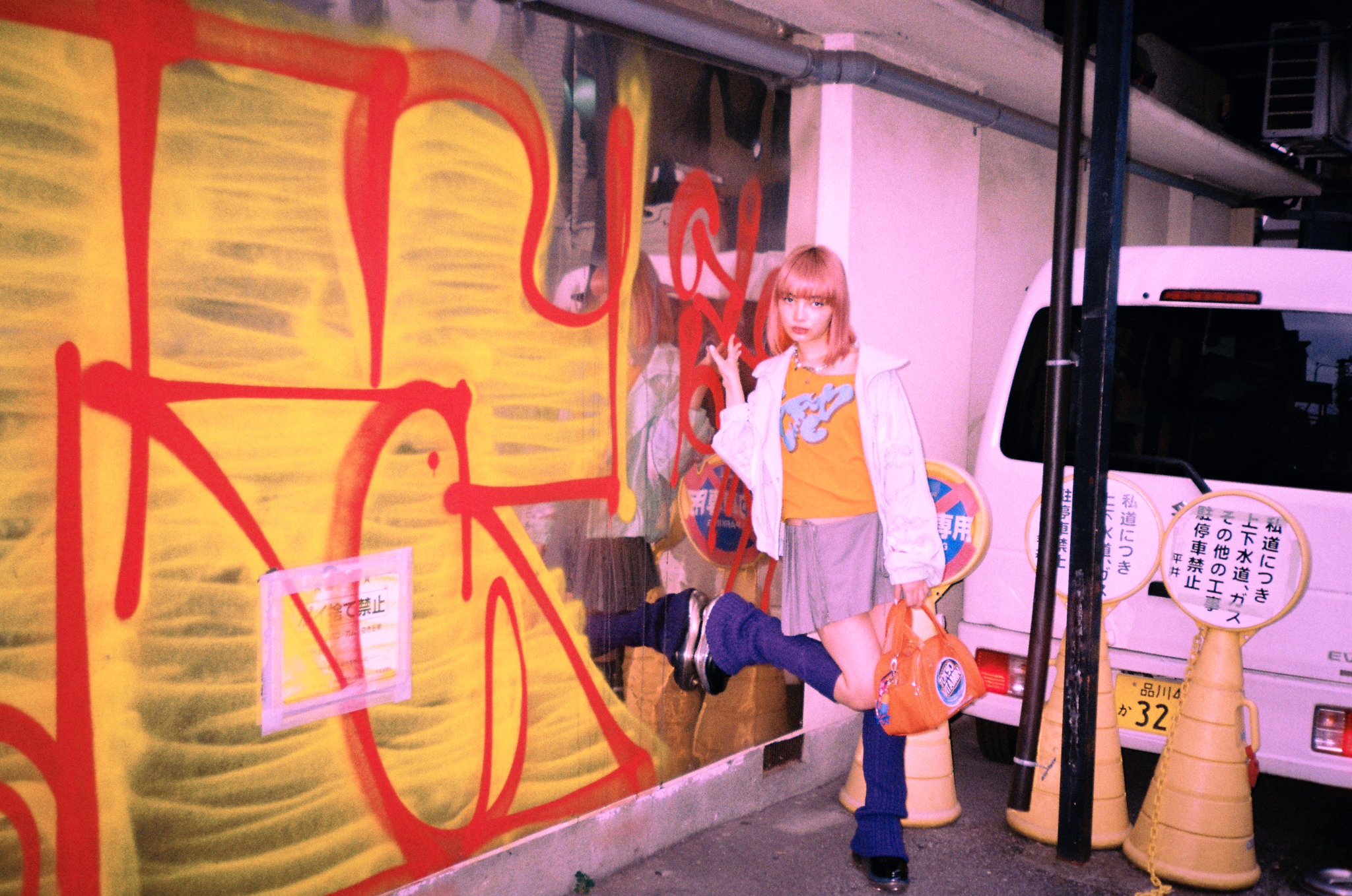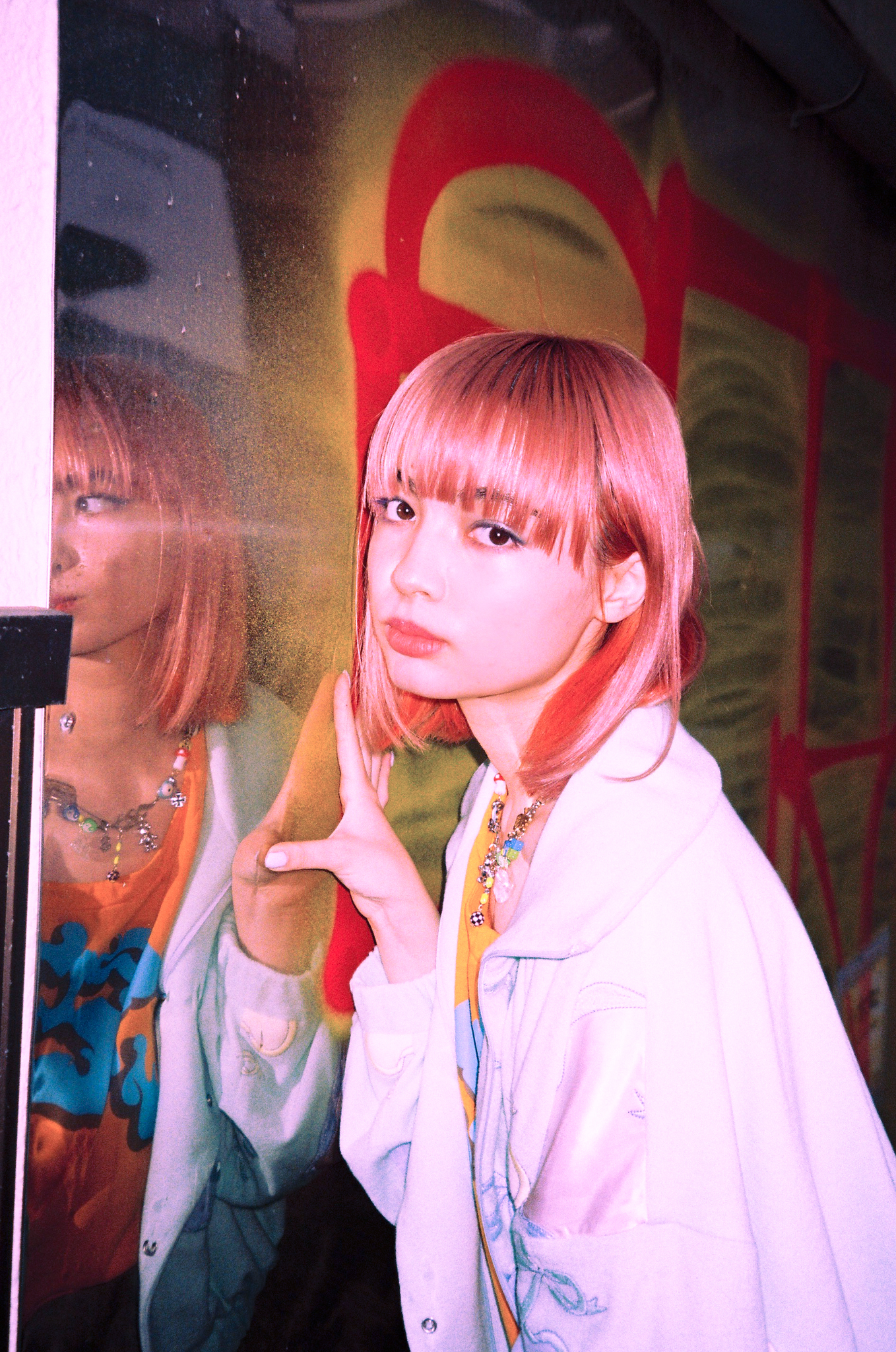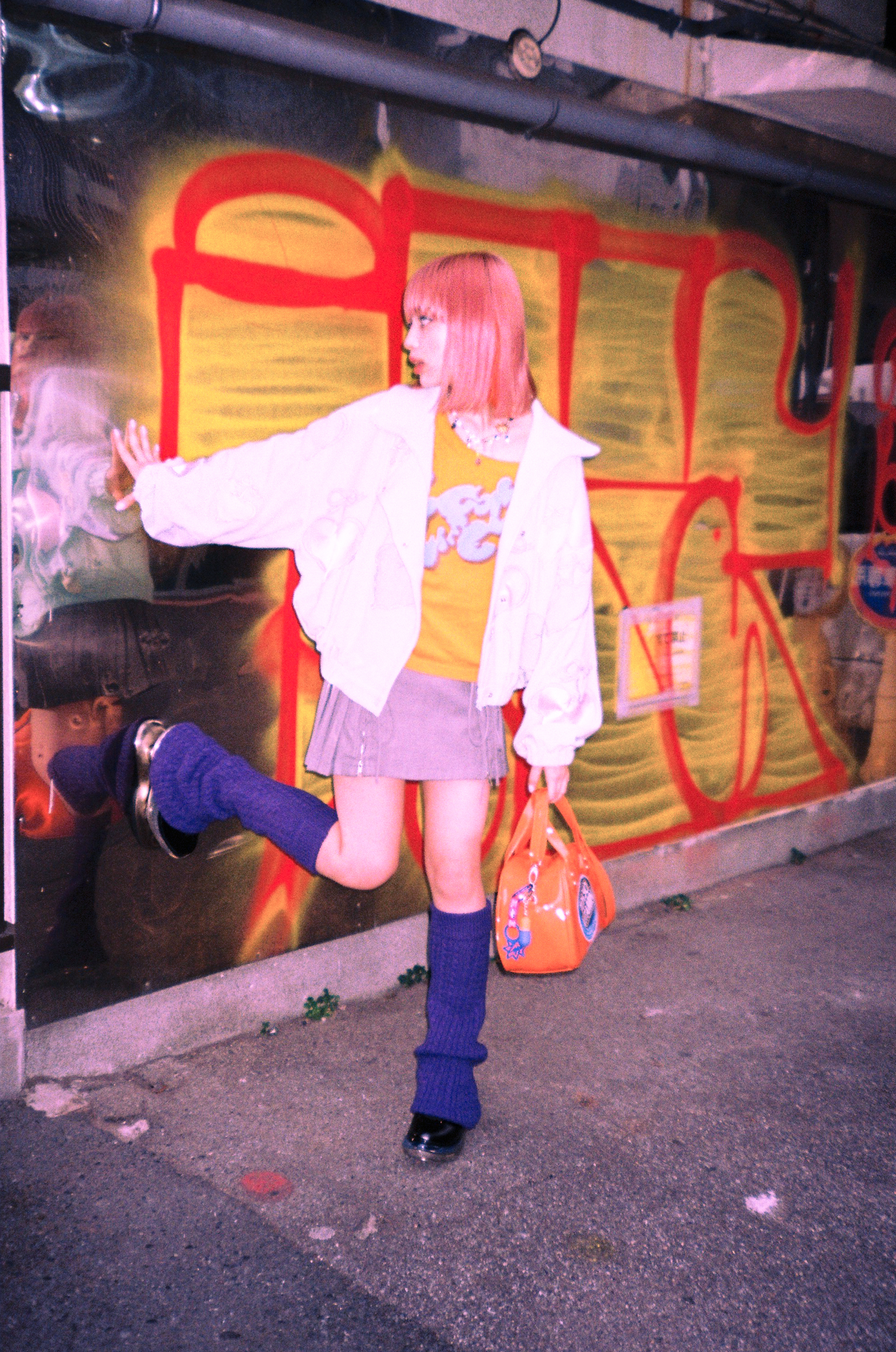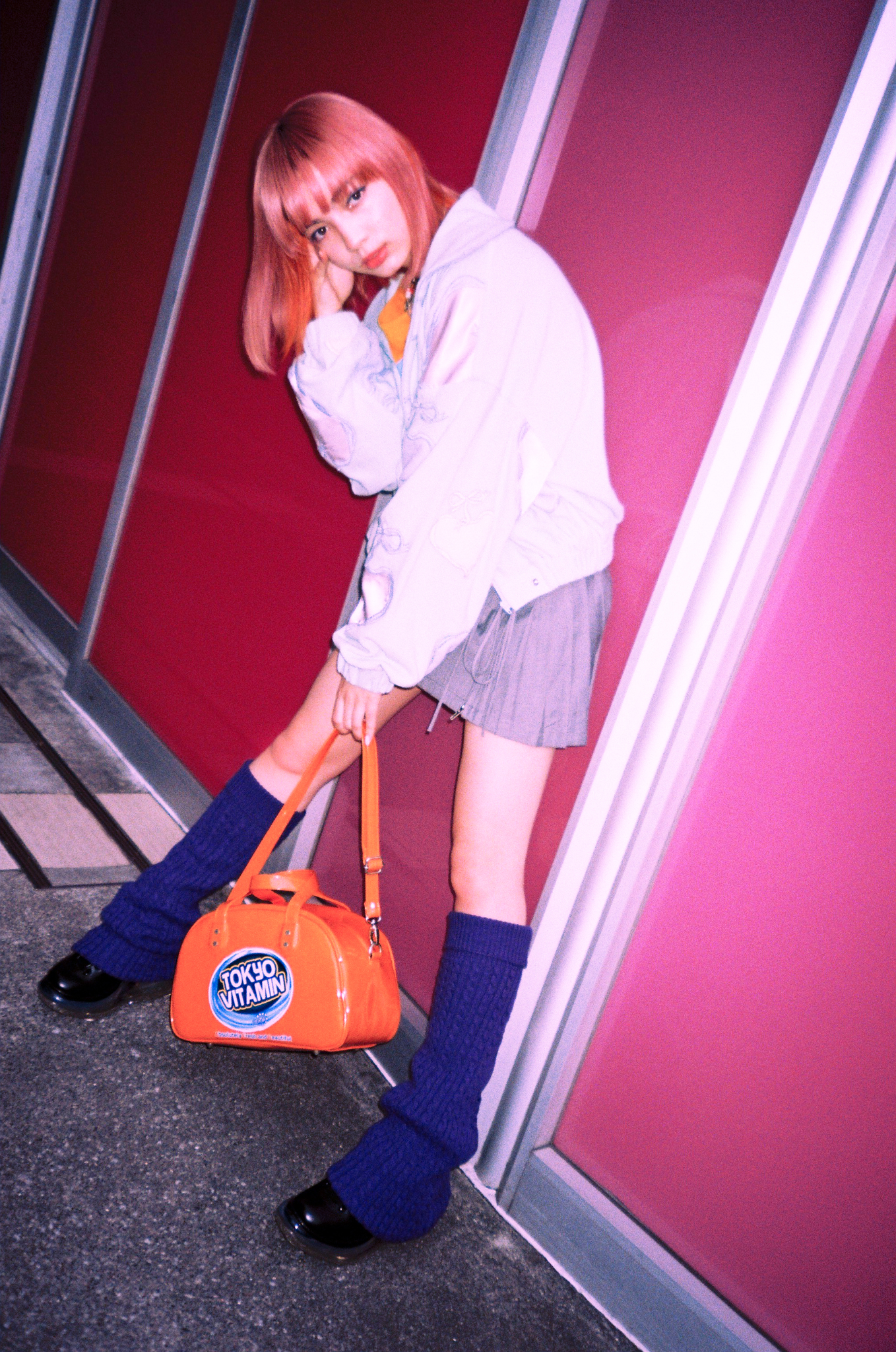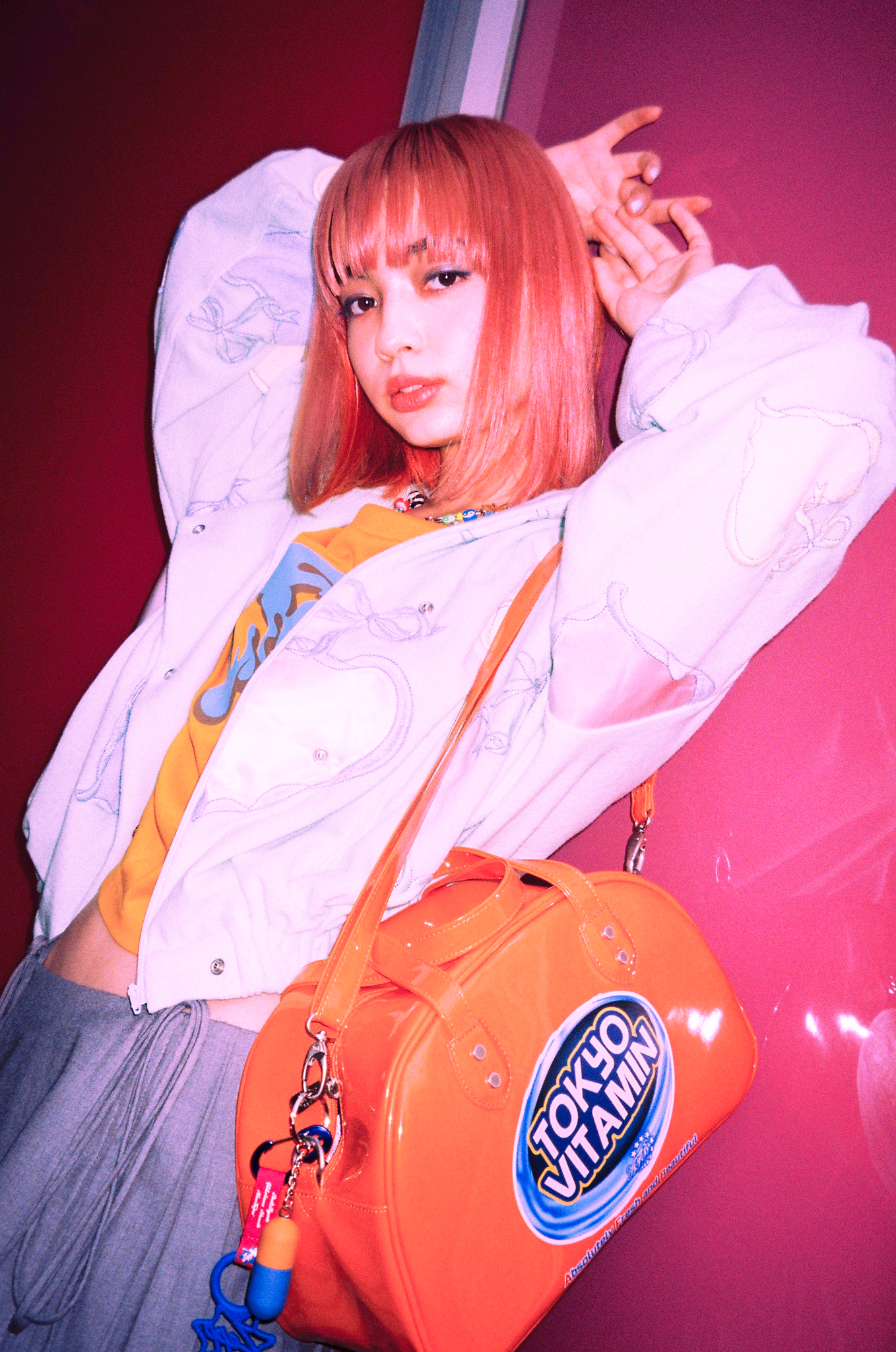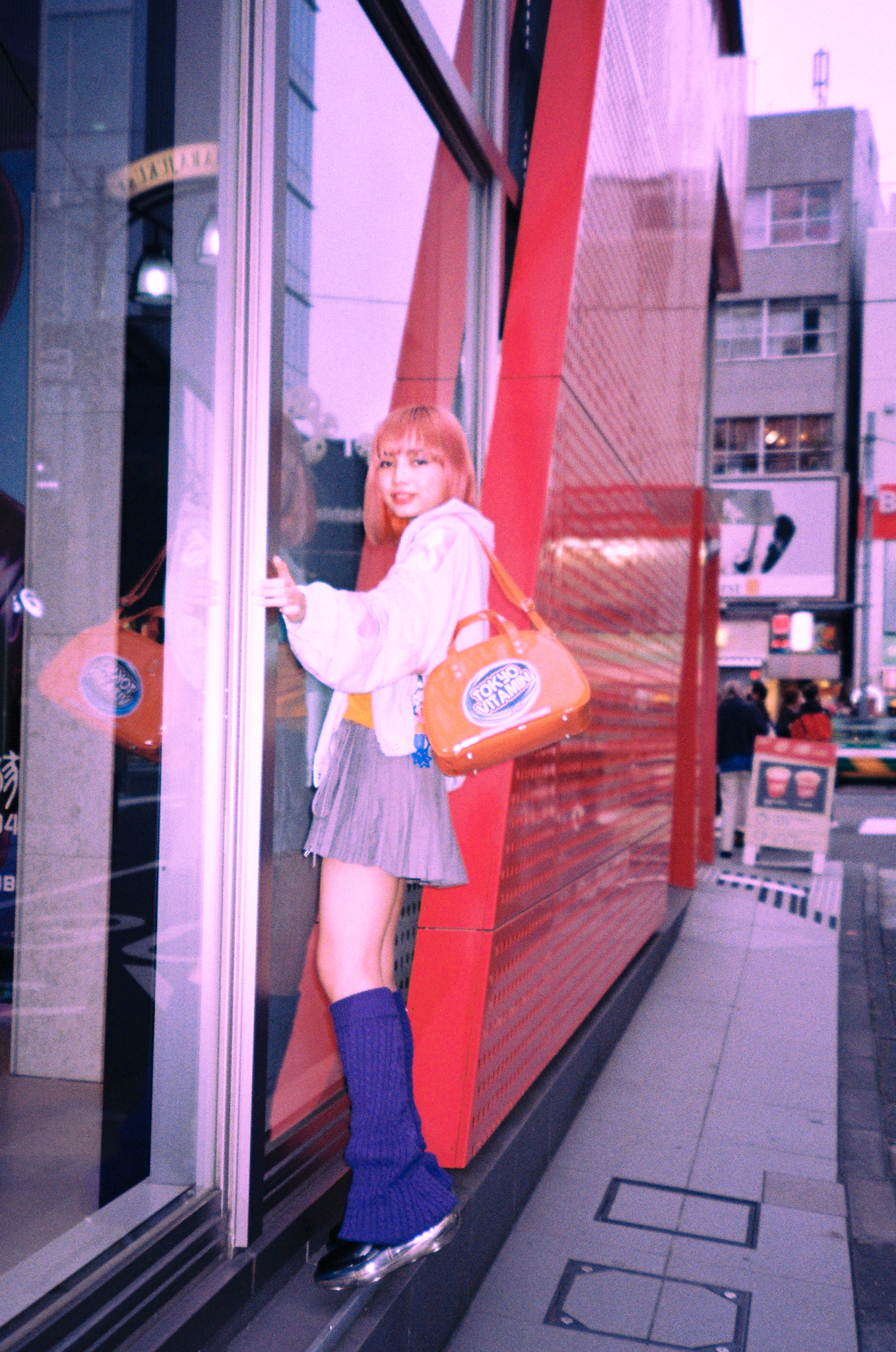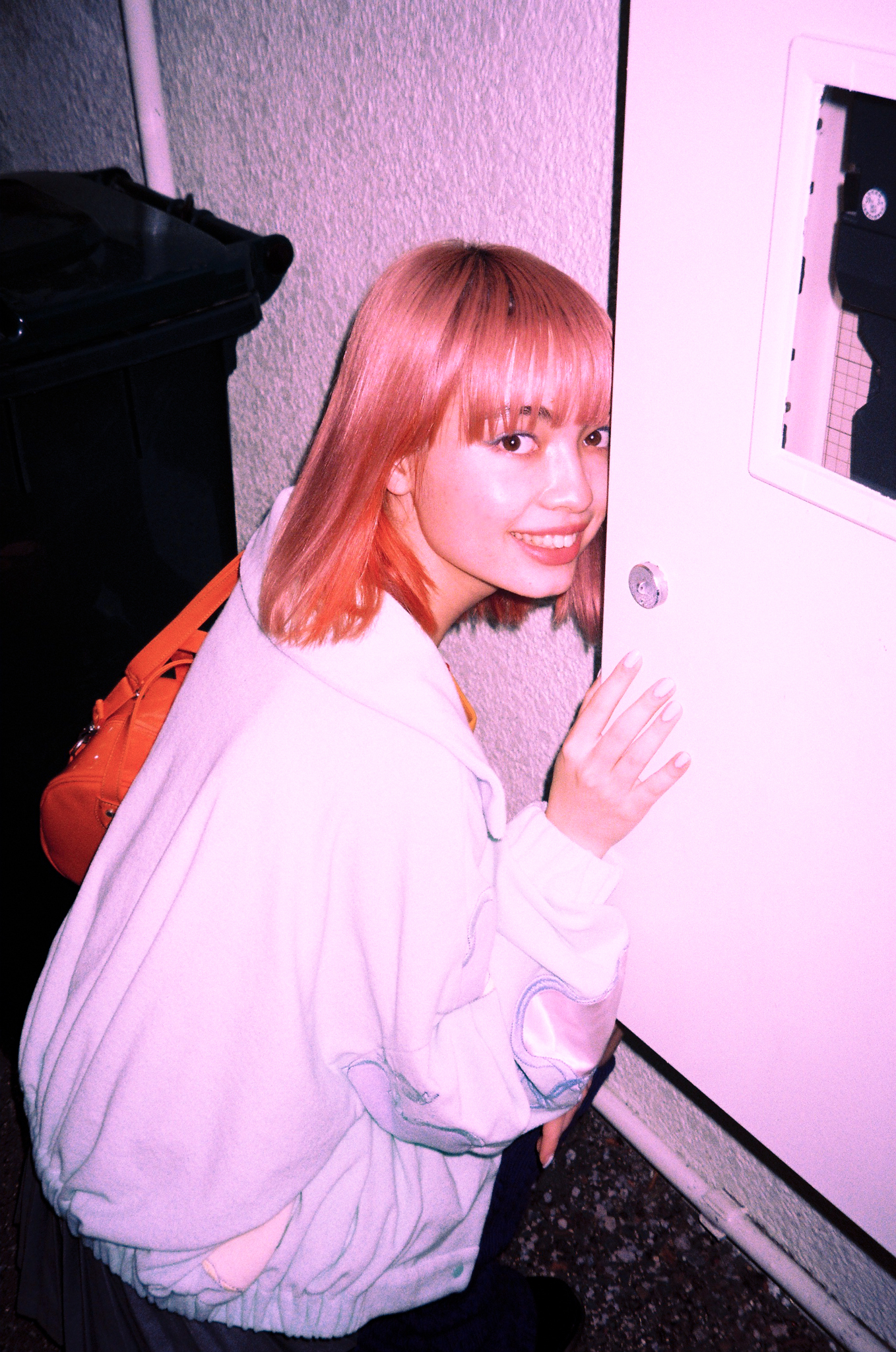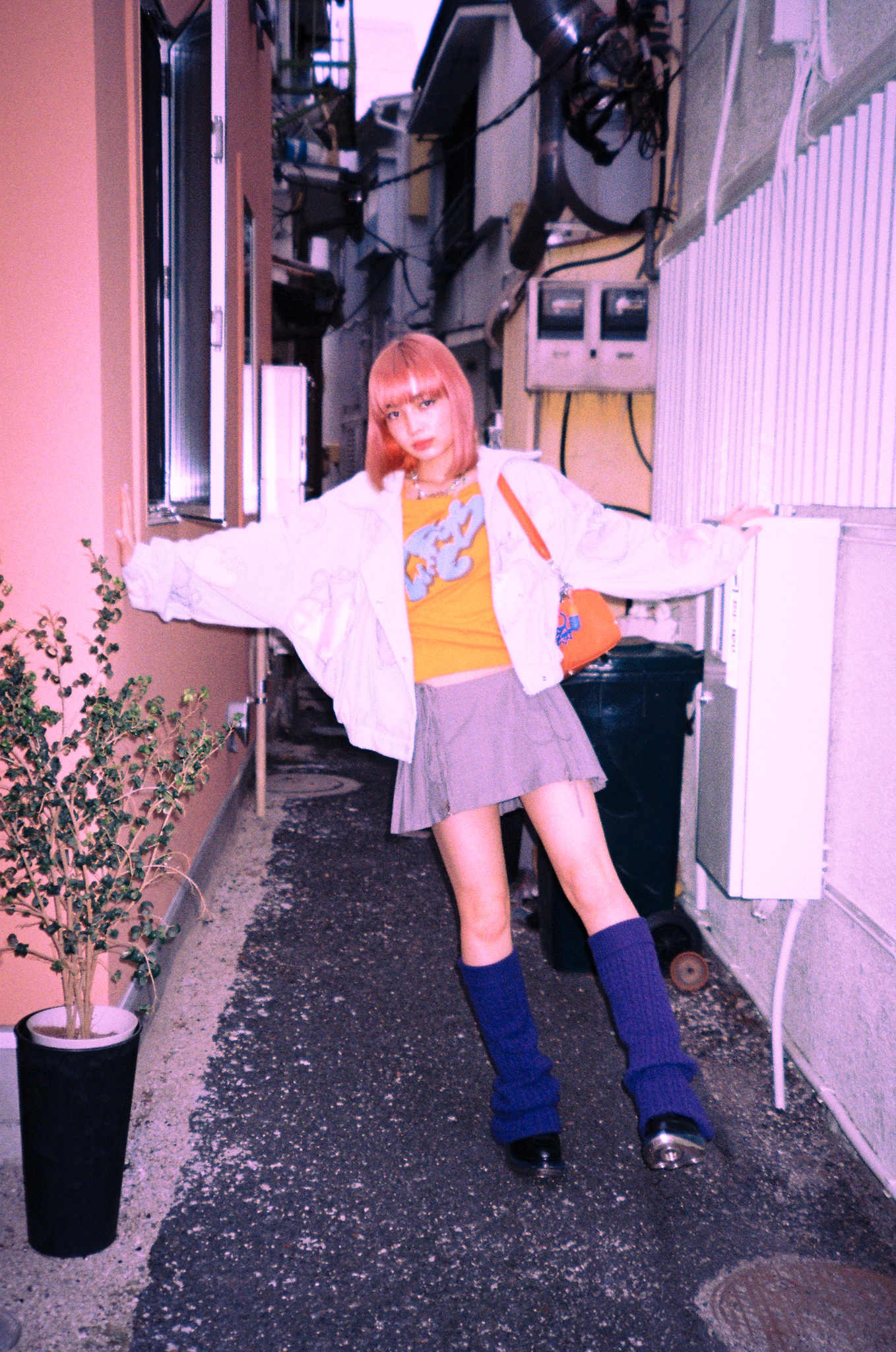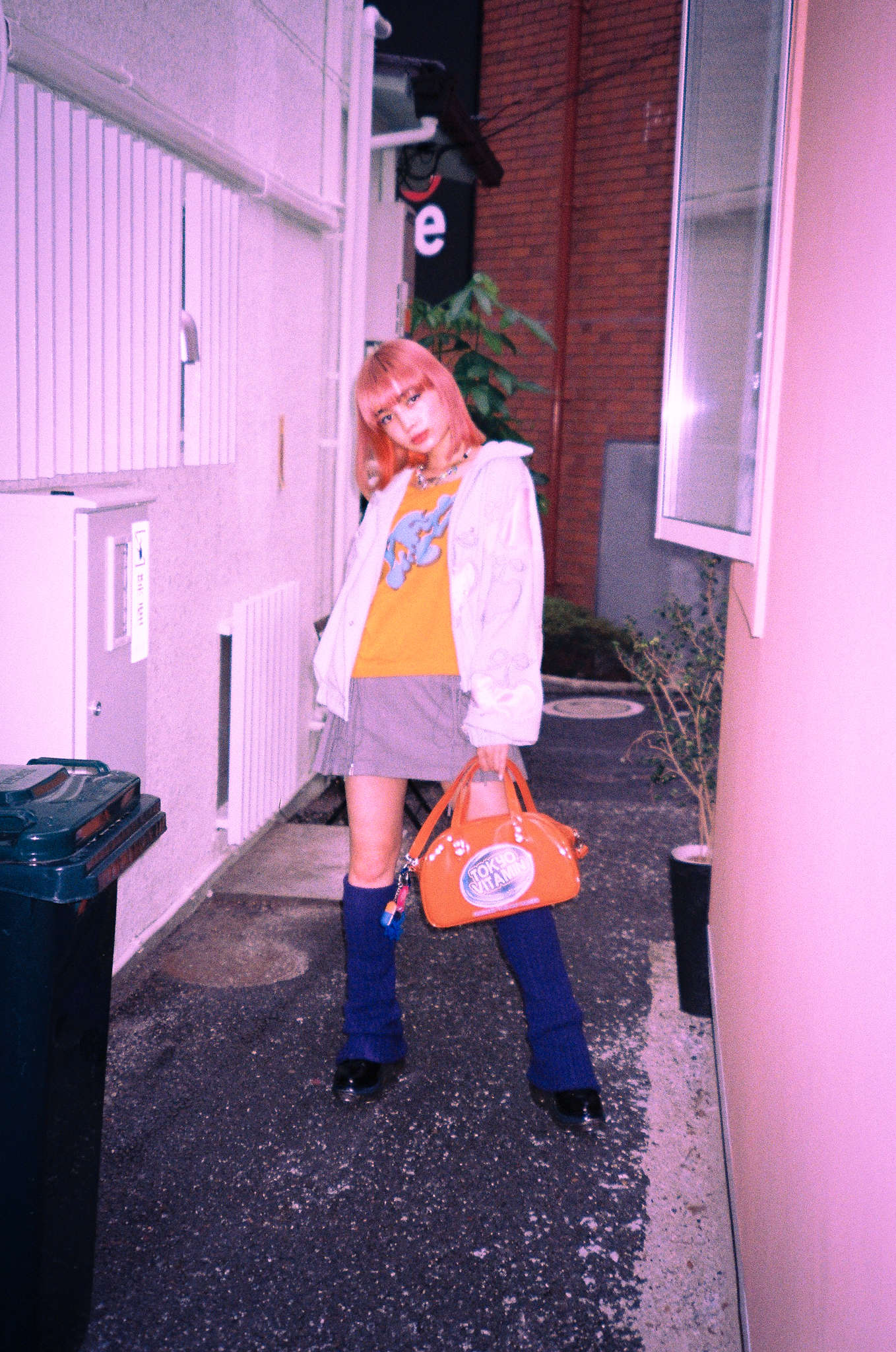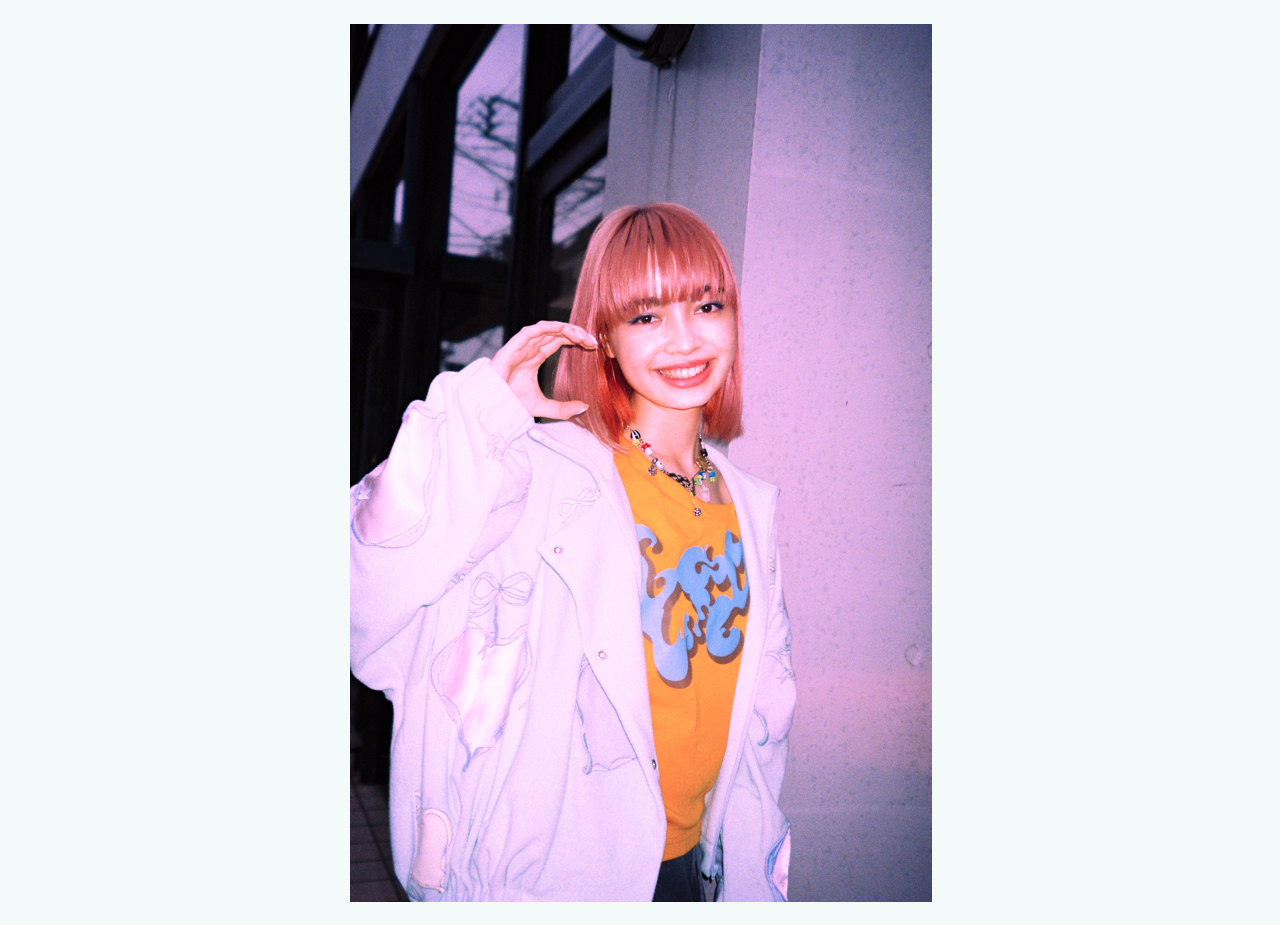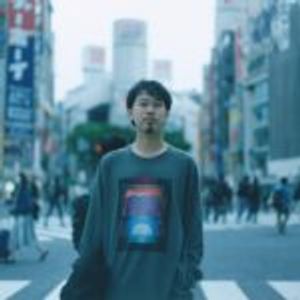Born in 2002, MANON is gaining popularity with her incorporation of late ‘90s trends: baby tees, loose-fitting socks, and Para Para choreography. But this 2000’s girl is attracting attention for more than just her style.
Her latest release on December 8th, “Girlfriend,” featured DJ CHARI as a producer. And in the past, she’s collaborated with big-name artists such as Hiroshi Fujiwara and QieziMabo, up-and-coming artists such as dodo and LEX, and even international artists such as Kero Kero Bonito. Many influential artists collaborate with MANON because something about her music and style resonates with them.
Why does MANON have such a large following? We take a closer look at the story behind 19-year-old MANON, who is always evolving and incorporating new cultures into her style.
Manon adds a catchy element to her songs, whether it’s through the lyrics, melody, or creative universe.
ーーYou’ve collaborated with many popular artists in the past, including with your latest release, a new song with DJ CHARI. What’s this song about?
MANON: It’s a song about a girl who’s in love with an older man. I’m currently 19 years old, and a lot of people my age develop feelings for people who are a bit older. I think this song represents how these girls feel—like, “I want them to notice me.”
MANON “Girlfriend”
ーーThis was your first time making music with DJ CHARI, right? How did you guys go about making this one?
MANON: This was my first time going into the studio and thinking of the song together. It was different from how I typically make music, so it was refreshing.
ーーWhat do you mean by “thinking of the song together”?
MANON: I’d listened to the song beforehand, so I wrote the lyrics in advance and brought them to the studio. I’d mixed some English into the hook. But when I went to the studio and CHARI listened to the lyrics, he suggested that I change the hook to Japanese to make it resonate more easily [with listeners]. This was the first time I wrote and recorded lyrics on the spot. I’d never done that before, but it was really fun.
ーーHow exactly did you want the hook to sound?
MANON: In the beginning, I added hooks that would make the song sound catchier, like the line, “Kimi no kanojo ka tomodachi” (Am I your friend or girlfriend) or “gomenasai,” (sorry) which is a line you often hear in hip hop. I also tried to make it accessible for people who don’t usually listen to rap music.
ーー”Girlfriend” aside, do you usually try to make your songs accessible and easy to listen to?
MANON: Yeah, I do. Recently, I’ve been trying to add a catchy element, whether that’s through the lyrics, melody, or creative universe. For example, with my last song, “GALCHAN MODE,” I tried to add a catchy element and a sense of confusion by creating this cohesive gyaru universe and incorporating Para Para choreography.
Manon likes mashups, whether it’s music or fashion
ーーI heard that you’re not only directing your music but also your music videos. Do you also try to include a catchy element in your videos?
MANON: I’m definitely conscious of it, but when it comes to my music videos, I tend to just incorporate things that I like. With “18,” I wanted to express being 18 years old with a bit of roughness. So the single cover was shot on film, which I was interested in at the time, and the music video was shot on VHS. With “GALCHAN MODE,” I mixed the universes of “Love Berry” (short for Love and Berry: Dress Up and Dance!, a card/arcade game targeted toward girls), which I’ve always loved, and “Umi Monogatari,” which I’ve been curious about since spotting it on the door of a pachinko parlor in Nakameguro. I was imagining a 3D world that felt like it belonged in the 2000s without being too cheesy.
MANON, “GALCHAN MODE”
MANON, “18”
ーーHow did you incorporate things that you like into your latest release?
MANON: I wanted to try looking like a girl with big, exaggerated eyes, like a shojo manga or purikura editing, which I think is a cultural phenomenon that came out of Japan. I asked the creative unit tsuchifumazu to make me an Instagram filter. I thought it would be a bit creepy but cute to lip-synch with these shojo manga-sized eyes. I had fun making it because it’s a part of Japanese culture that I like. And that’s not all—since I was collaborating with CHARI, I added a bit of a hip-hop vibe with the styling so it would look different from my last song, “GALCHAN MODE.”
ーーI feel your artistic expression has a strong gyaru and hip hop essence. What would you consider your musical roots?
MANON: When it comes to my musical roots, I was more influenced by the music my parents showed me than hip-hop. My dad, who is French, often used to play Daft Punk and Gorillaz in the car. When I was listening to electro and techno-pop, my dad was the one who showed me Madeon. He introduced me to a mashup culture that has been a big influence on who I am today.
From my mom, I learned about Major Force, the label that David Bowie and Hiroshi Fujiwara were signed to. Obviously, that influenced my music, but it also had a big influence on my fashion style.
ーーI see your parents have been a big influence. Could you tell us about how you first became inspired by gyaru and hip-hop culture?
MANON: I went to a Yurufuwa Gang show when I was in high school. After that, I started listening to a lot of hip-hop, so that was the start of it all. Back then, I hadn’t heard of the Yurufuwa Gang, but my friend brought me to the show. And the energy at the show was amazing. I was really impressed, like, “What is this? The audience isn’t applauding, but everyone is so excited. It’s incredible!”
ーーHow did you first come across gyaru culture? Gyaru culture was incredibly popular from the late 1990s until the early 2000s. You weren’t around at the time—how did you find out about it?
MANON: There isn’t really one story that I can pinpoint. (laughs) I just like items from gyaru culture, like baby tees and loose socks. When I dug deeper, I found out that gyaru culture came from the late ‘90s to early 2000s. Once I found out that baby tees and loose socks were a revival of that era, I wanted to see photos and magazines from that time. I started looking for them on Instagram and Pinterest.
ーーWhat was it about gyaru culture that you were fascinated by?
MANON: Rather than just copying gyaru fashion from back in the day, I think it’s cute to add a modern touch. I incorporate the baby tees, loose socks, and miniskirts that were popular back then, but recently I’ve been adding hand warmers to that. These hand warmers come from Goth Lolita and Lolita fashion. I like this mashup of different cultures.
ーーAre there any artists who inspire your “mashup gyaru” style?
MANON: I guess Avril Lavigne. I feel like her essence is very gyaru. When I was in elementary school, I saw a TV show where she came to Japan and was shopping at Shibuya 109. At the time, she looked more like a gyaru than anyone else at 109. She wears baby tees a lot, and I love how she combines that with Doc Marten boots. She’s one of the early inspirations for my style.
ーーDo you have friends around your age who also dress like a gyaru?
MANON: I don’t really have many friends who you’d think of as a gyaru at first glance. Nowadays, everyone wears whatever they like at any given time, so what they’re wearing always changes. But that’s just when it comes to fashion—I think some people don’t dress like a gyaru, but their mindset is like one. So anyone can become a gyaru at any time. If you think of yourself as a gyaru, you’re a gyaru. So a lot of people from my generation are “mind gyaru.”
Manon is inspired by the artists and audience members who she meets through her shows
ーーApart from music and fashion, is there anything you’re particular about in terms of self-expression? For example, is there anything you’re particular about when it comes to social media?
MANON: I think I upload things to social media without thinking about it too deeply. For example, on Instagram, I post stories about my daily life or whatever happened that day. Other than that, I upload things as memories.
ーーI see. You edit the videos that you upload to social media yourself, right?
MANON: Yeah, I make my own Instagram and TikTok videos. I don’t know if it’s because the videos are short, but for some reason, the psychedelic stuff is popular. I think that’s why I try to make the videos I upload very colorful and edgy. I think people want to see something that has a lasting impact, precisely because the videos are short.
ーーSpeaking of how you present yourself, the way you collaborate with all kinds of people is very hip-hop, which is interesting. And it’s incredible how so many of those people are big names. How did those collaborations come about?
MANON: The catalyst for the collaboration varies from artist to artist, but mainly, if I have an idea of what kind of song I want to make, I reach out to an artist who I think would be a good fit.
For example, Lil’Yukichi produced “GALCHAN MODE,” and at the time, I wanted to try making an electro song. Lil’Yukichi’s music was close to what I was imagining, so I asked him to produce it.
ーーHow do you usually ask people to collaborate?
MANON: A lot of the time, I ask people after meeting them in person, like at an event or show. Artists approach me a lot of the time too, which is an honor. With Hiroshi Fujiwara, he liked my song, “WORLD’S END” and remixed it. QieziMabo also reached out to me when he had a project where he was creating a song with AI.
MANON, “WORLD’S END feat. dodo”
ーーJun Inagawa designed the single cover for your latest release, “Girlfriend,” right?
MANON: Yeah. Jun made stickers for me when I released “18”. At the time, I told him that I wanted to collaborate on some cover art too. After that, we saw each other several times at events, and then we finally made it happen.
ーーYou’ve also collaborated with artists from other countries.
MANON: When I like a foreign artist and want to collaborate with them, I reach out via Instagram DM. I can’t tell you who I’m talking about yet, but a collaboration with one of my favorite artists was also decided over DM. I’m very happy about it, so I’m really looking forward to it.
ーーYou take the initiative and ask people yourself.
MANON: Yeah. These days, I’ve had more opportunities to ask artists who I’m friendly with, so making music has been really fun. I’m glad I moved to Tokyo from Fukuoka.
ーーFinally, could you tell us about your future plans?
MANON: I turn 20 in January of 2022. That means I’ll be able to perform at more venues, so I want to do more shows. The coronavirus happened right after I moved to Tokyo two years ago, meaning I couldn’t perform live. So more than anything, I want to perform. These days, I think I have the most fun when I’m performing. At my shows, I can meet all kinds of artists and interact with the audience, so that’s another source of inspiration for me.
ーーHas anything changed as you do more shows?
MANON: I performed at Yagi, an event hosted by Reiji Okamoto that was held in Osaka this year, and that show left a big impression on me. I guess I could even say it was a turning point for me. With my past performances, I couldn’t really express my innermost feelings, probably due to nerves. But with this performance, I felt like I could shout what I’d been feeling deep down. Since then, the energy I was able to express that day has been important to me. I’ve been able to go into performances with the genuine intention of making the show more exciting and entertaining for the audience. I’ve realized that I don’t want the show to only be a listening experience. I want people to genuinely have fun.
ーーI’m looking forward to seeing you at one of your shows in 2022.
MANON: Thank you. The same way that I started listening to hip hop after a Yurufuwa Gang show, or fell in love with gyaru fashion after seeing Avril Lavigne, I want to become the kind of artist who can influence people and change their lives.
MANON
Born in Fukuoka, MANON is a 19-year-old artist who has been called a cultural icon of the next generation. She’s made headlines for her collaborations, which range from up-and-coming artists such as dodo and LEX to big names such as Hiroshi Fujiwara and Kero Kero Bonito. She is also known for her work as a model, wearing everything from street to high fashion styles, and is gaining popularity for her success in both music and fashion.
MANON
次世代カルチャーアイコンとの呼び声が高い、福岡県出身の 19 歳。dodo、LEX といった新鋭アーティストから、藤原ヒロシやケロ・ ケロ・ボニトまで、多岐にわたるコラボレーションも話題のアーティスト活動に、ストリートからモードまで着こなすモデル活動と、音楽とファッションを横断した活躍で注目を集めている。
https://cac2002.official.ec
Instagram:@je_suis_manon2
Twitter:@je_suis_manon
YouTube:MANON
TikTok:@je_suis_manon0
Photography Sumire Ozawa
Translation Aya Apton

